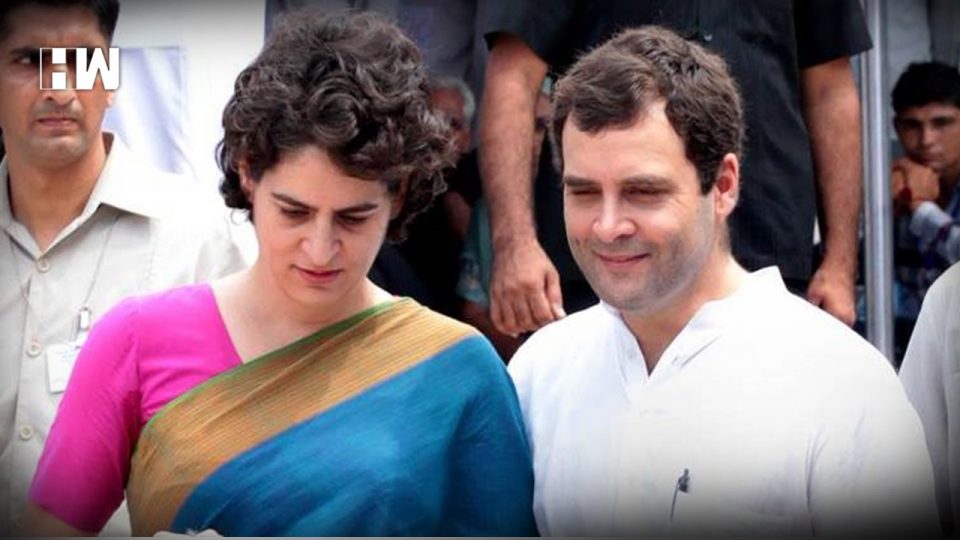Until now Gandhis and Prime Minister Narendra Modi were enjoying the SPG cover but from now on only PM Modi will be protected by the elite SPG commandos.
New Delhi| On Friday the govt decided to withdraw the Special Protection Group (SPG) security cover given to the Gandhi family from the past 28 years. Congress president Sonia Gandhi, and her children Rahul Gandhi and Priyanka Gandhi Vadra will not be given any SPG protection henceforth.
The Gandhi family will now get ‘Z+’ security by the Central Reserve Police Force (CRPF) on an all-India basis. Although the Gandhis have not been informed of the decision yet, CRPF personnel have already been stationed at the 10 Janpath residence.
Govt Sources: Govt has decided to withdraw SPG protection from the Gandhi family(Sonia Gandhi,Rahul Gandhi and Priyanka Gandhi Vadra), they will now be accorded Z+ security pic.twitter.com/Auina87oQ8
— ANI (@ANI) November 8, 2019
The decision came in effect after multiple security agencies carried out a threat perception assessment and found there was no direct threat to them. “Recently, a decision was taken after assessing threat inputs from all agencies,” senior officials said.
The SPG cover is the highest tier of security in the country. Officials assured that the security of the Gandhis will not be compromised. The government had recently also withdrawn the SPG cover of former Prime Minister Manmohan Singh.
Also Read: Rajiv Gandhi used INS Viraat for family holidays, alleges PM Modi
The Gandhi was placed in the VVIP security list following an amendment in September 1991 in the SPG Act of 1988.
Until now Gandhi Family and Prime Minister Narendra Modi were enjoying the SPG cover but from now on only PM Modi will be protected by the elite SPG commandos.
Under the Z-plus security, the Gandhis will have commandos from the paramilitary force besides guards at their homes and where ever they travel in the country, the official said. SPG protectees, under the rules, are provided with guards, hi-tech vehicles, jammers and an ambulance in their carcade.
The SPG, a force of roughly 3,000 active personnel, was formed in 1985 following the assassination of former Prime Minister Indira Gandhi by her own bodyguards in 1984.
The move to withdraw the security layer is likely to take on political overtones.
Senior Congress leader Ahmed Patel said the ruling BJP has “descended to the ultimate personal vendetta mechanism”. “The BJP has descended to the ultimate personal vendetta mechanism, compromising the lives of family members of 2 Former Prime Ministers to acts of terror and violence,” he tweeted.
Recently, the SPG cover given to Rahul Gandhi had come under scrutiny after certain “gaps” were found in his security detail. It was reported that on 143 of his 156 trips abroad in the last four years, Rahul Gandhi did not take the SPG with him.
The government had in October then issued fresh guidelines related to the SPG in a move that was seen as an attempt to track the Gandhi family. Under the new directives, it became mandatory for SPG personnel to accompany their charges at all times, including on personal foreign visits.
In August, the government had also downgraded the security cover given to former Prime Minister Manmohan Singh to the Z-plus category.
According to procedures laid down by the SPG Act, 1988, Singh was entitled to SPG cover for one year after he demitted office in 2014. His SPG security cover was renewed annually after a review of the threats faced by him and his wife Gursharan Kaur.
The SPG Act, enacted by Parliament in 1988, was initially supposed to provide security to only the prime minister and former prime ministers of the country. The Act was amended after the assassination of Rajiv Gandhi to include the immediate family members of former prime ministers, paving the way for Sonia Gandhi as well her children to get SPG security.
The need for a separate force for guarding the prime minister of the country was felt after Indira Gandhi was assassinated by her own security guards on October 31, 1984.
As an independent media platform, we do not take advertisements from governments and corporate houses. It is you, our readers, who have supported us on our journey to do honest and unbiased journalism. Please contribute, so that we can continue to do the same in future.

